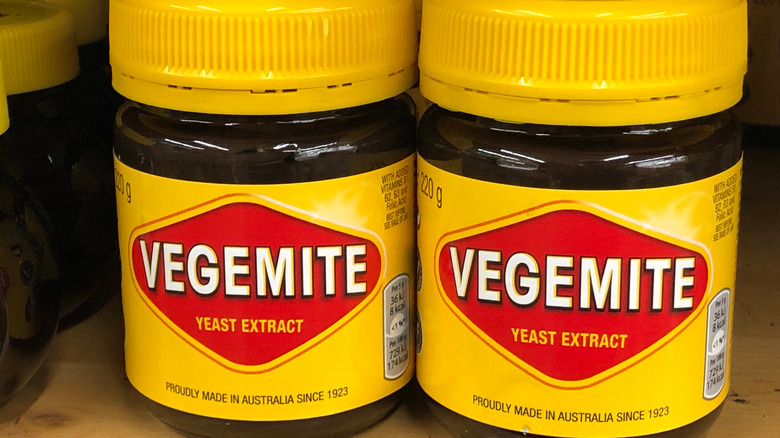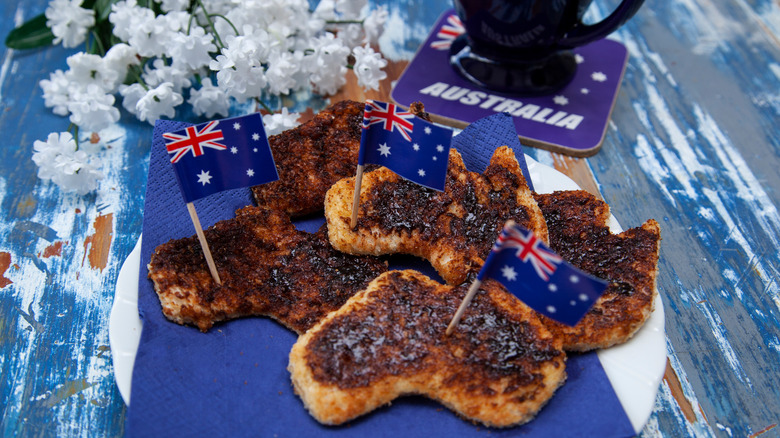The Real Reason Vegemite Was Invented
Vegemite may not be popular in the United States, but it's possible you've heard of it or maybe even tasted it. If you've visited Australia or have Australian friends, then it's even more probable you're familiar with the bright yellow-labeled jars.
So what is this brown, thick spread made up of exactly? It's created from brewer's yeast, an ingredient used to make beer, along with other ingredients. It is often considered beneficial for the digestive tract, including treating diarrhea, according to an article in Healthline.
Vegemite is a bitter and salty spread that is typically put on bread for breakfast, on crackers as a snack, and even on sandwiches, just like you'd lather on mayonnaise or mustard. Plus, it's also used as a filling for desserts and pastries, like turnovers and filled doughnuts. The taste doesn't cater to all palettes, though, so you'll find people either love it or hate it. There really isn't an in-between. But what inspired Vegemite to be created in the first place?
Vegemite is uniquely Australian
In 1922, an Australian food creator, Fred Walker, wanted to have a similar version of Marmite, a quintessential British spread with a sweet and salty taste that is made from yeast extract. He worked with a chemist, Cyril Percy Callister, to help him craft the product, now known as Vegemite. Initially, the spread didn't fly off the shelves. Yet, between promoting it alongside Kraft products in 1930 and Marmite becoming unavailable during World War II, Vegemite caught on, according to the National Museum Australia.
Vegemite was provided to the Australian Army, and by the 1950s, this dark, bitter, and savory concoction became associated as an Australian food item (via National Museum Australia).
To this day, many Australians feel a strong sense of identity, pride, and connection with Vegemite with a bright yellow label and lid. You may just find them carrying a jar around on their travels, or secretly hoarding several jars in the cupboard when they're away from the continent.

